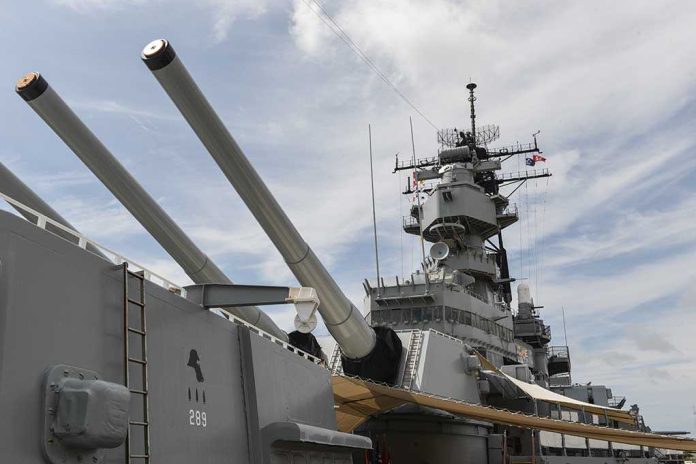
One aircraft carrier, thousands of nautical miles, and a continent on edge—America’s latest military maneuver in Latin America is setting off ripples that may well redraw the balance of power in the hemisphere.
Story Snapshot
- The U.S. deployment of an aircraft carrier to Latin America marks a dramatic escalation of military presence in the region.
- Strategic motives behind the move signal shifting priorities and possible realignments in hemispheric security.
- Local governments and global players are reacting, with uncertainty fueling both alliances and anxieties.
- The operation raises questions about long-term American interests, regional stability, and the future of Latin American sovereignty.
A Carrier Arrives and Tensions Multiply
The United States Navy’s decision to send an aircraft carrier to Latin America has reignited debates about the country’s role as a hemispheric security leader. The arrival of this colossal warship, bristling with jets and advanced surveillance, signals more than a routine exercise. For decades, American carriers have symbolized both deterrence and dominance, but rarely have they loomed so close to Latin shores with such intent. This deployment hints at broader objectives, from countering transnational threats to reminding adversaries—state and non-state alike—that U.S. resolve remains formidable.
Regional governments are scrambling to interpret Washington’s motives. Some officials privately welcome the show of force, viewing it as a bulwark against criminal networks and external pressures. Others warn that this presence risks escalating local tensions and undermining diplomatic initiatives. Latin America’s strategic corridors—choke points for global shipping, energy flow, and migration routes—have rarely been so closely watched. The carrier’s arrival is not just a military event; it’s a geopolitical message, broadcast in steel and speed.
Strategic Calculations and Political Chess
Washington’s move comes at a time of intensifying global competition. China’s investments in Latin infrastructure and Russia’s overtures to regional governments have pushed American strategists to reassess their commitments. The aircraft carrier’s deployment is, in part, a response to these encroachments. U.S. defense planners argue that forward presence deters malign influence and reassures allies. Critics, however, question whether such hardware-heavy gestures genuinely address the region’s most pressing security needs, such as cyber threats, organized crime, and social unrest.
Latin American leaders face a familiar dilemma—how to leverage great power attention without ceding sovereignty. Some are negotiating new security accords, hoping to secure training, intelligence, and economic aid. Others are wary, recalling past interventions that left lasting scars. The shadow of history hangs over every handshake and joint exercise. American diplomats, for their part, promise partnership and respect, but the thrum of jets overhead can drown out softer words.
Ripple Effects and Unanswered Questions
The carrier’s presence is already shaping local politics. Nationalist parties in several countries have seized on the deployment to rally supporters and demand greater autonomy. Civil society groups are raising alarms about militarization, calling for transparency and oversight. U.S. officials insist their mission is strictly defensive, but the line between assurance and provocation can blur quickly in a region with deep memories of foreign intervention.
Global observers are watching for signs of escalation. Should rival powers respond in kind, Latin America could become the next arena in a broader contest for influence—one with unpredictable consequences for trade, migration, and stability. The aircraft carrier may depart in months, but its wake will linger. American policymakers must now confront the limits of hard power and the challenge of building trust in a changing world. The region’s future hinges not just on military might, but on the wisdom to wield it carefully.
Sources:
Pentagon orders aircraft carrier to Latin America as Trump signals escalation












